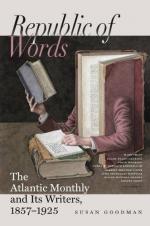Quitting the Abbey, and passing into the gardens, we followed the gardener through the deepening gloom to the wood, where, in former days, an ancestor of the Byrons set up leaden statues of satyrs, which the country-people called “the old lord’s devils”; and very much like demons they looked. The tree was pointed out upon which Byron cut the names of “Augusta” and “Byron,” with the date, during a last walk the brother and sister took together at Newstead. It is a double tree, springing from one root, which he chose as emblematical of themselves. The dim light barely enabled us to discern letters deeply carved, but growing less visible with the expanding bark. One of the trees has withered under that spell which seems to have blasted all connected with the name, and is cut off just above the inscription. The oak planted by Byron in his youth in a different part of the grounds was also shown to us. It is yet strong and vigorous. We picked up a yellow leaf, which the wind bore to our feet, as a fitting memorial of the place and the hour.
Passing again through the old Abbey church, the chill of the evening met us, cold and damp,—fit atmosphere for the place. The rooks were all asleep in their high nests; silence, darkness, and mist were fast casting their mantle over old Newstead; and the only cheerful sign came from the distant window of the Colonel’s library, whence shot out a generous gleam of household fire,—emblem of that warm heart which had shed light upon the once desolate abode of its early friend.
Since our visit to Newstead, (seven years ago,) the Abbey has passed into other hands, and even a royal owner is now reported to possess the poet’s ancestral home. We shall ever deem ourselves fortunate that our destiny led us to make this pilgrimage during the lifetime of Colonel Wildman and while the place was under his enlightened and generous ownership.
A few miles from Newstead Abbey is Hucknall, a poor, desolate-looking village, at the end of whose street stands an old church, beneath which is the burial-place of the Byrons. The building is ancient and gray, but dreary rather than venerable. Standing in its comfortless interior, we remembered that Byron once asked to be buried under the green, grassy floor of the roofless church at Newstead Abbey, with his faithful dog at his feet. The poet, whose rapid glance seized every glory and beauty of Nature, whose memory, wax to receive, and marble to retain, transferred the vision through the medium of his rare command of language, should have had a grave over which winds sweep, birds sing, and stars watch. Not so. A white marble tablet let into the wall above the family-vault was erected to Byron’s memory by his sister. Perhaps the simplicity of the monument was suggested by these lines, written at the early age of nineteen years:—




